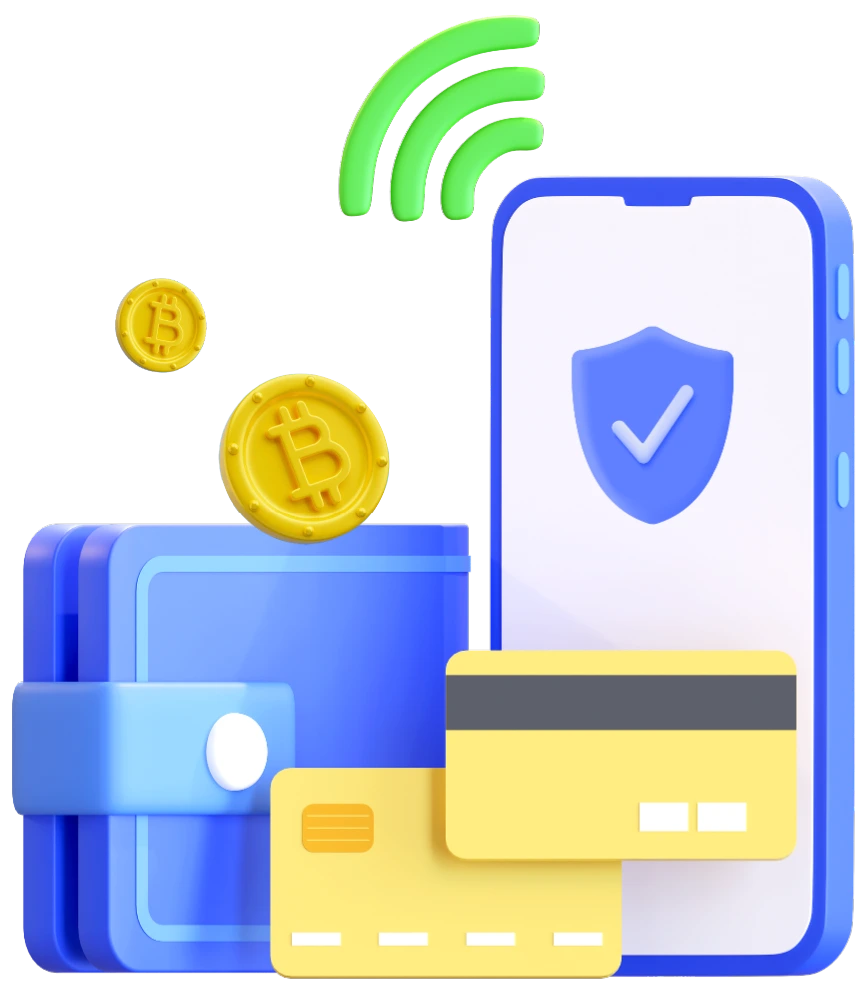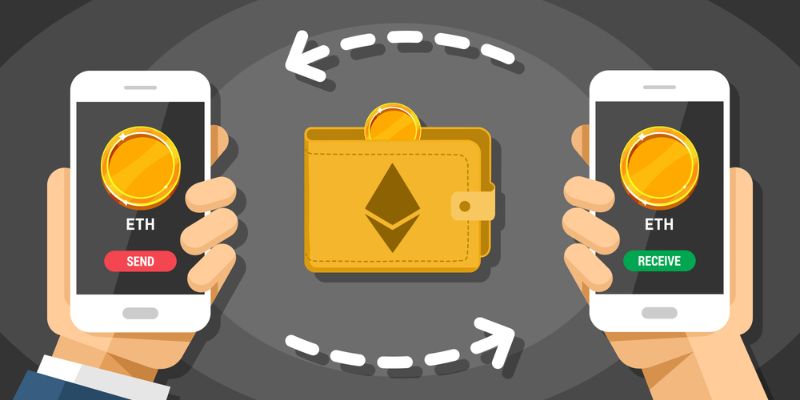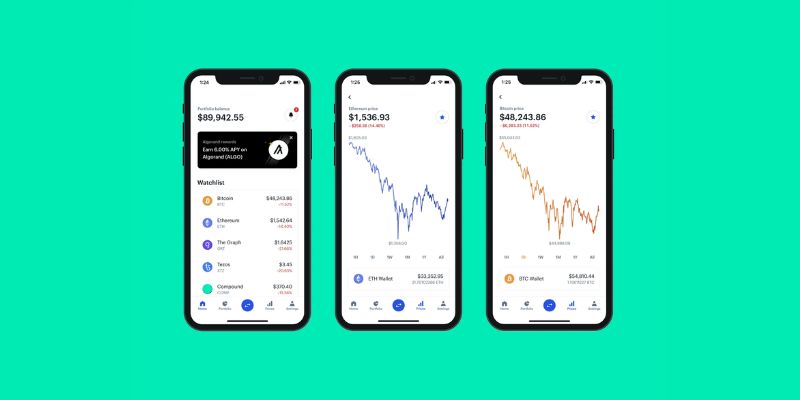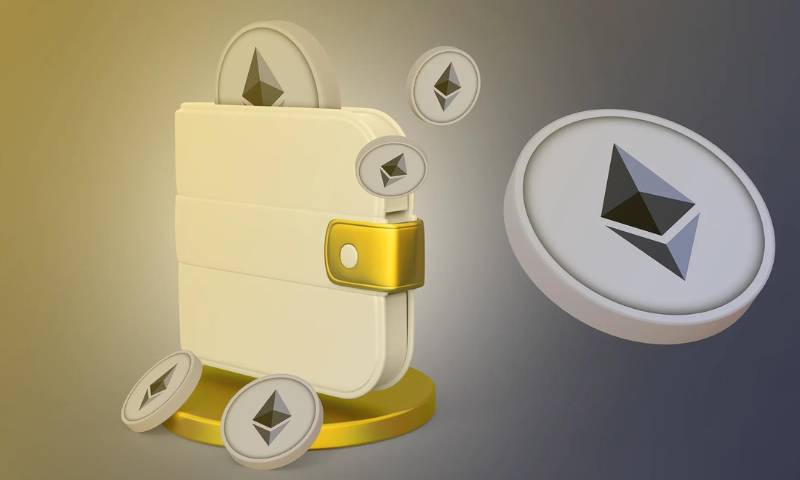Mobile crypto wallet security is a hot topic. We value our digital gold, but is it truly safe? With hackers lurking, you can’t skimp on safety. Dive in as I unpack risks, protections, and ways to keep your assets secure. Encryption, biometrics, and best practices—it’s all here. So, let’s bolster your defense and ensure that what’s yours, stays yours.
Understanding Mobile Crypto Wallet Risks and Protections
The Essentials of Mobile Wallet Protection
Mobile wallet protection starts with proactive steps. Secure cryptocurrency storage on smartphones means knowing the risks. Thieves are looking to take your digital cash. Would a thief find your phone a goldmine or a fortress?
First off, keep your apps up-to-date. Outdated apps leave open doors for hackers. Think of it as fixing a broken window at home. A fresh app version means a safer home for your crypto.
Now, what’s a private key, you might wonder? It’s like a super-secret password for your wallet. Mobile wallet private key security is crucial. If someone steals it, say goodbye to your coins. Make sure your wallet app keeps your key secure. You never want to leak this key.
But how can you be double sure? Two-factor authentication is like adding a deadbolt. You need two keys to get in, not just one. It could be a code from an app or a text message. This stops hackers who might have snagged your password.
Let’s talk about backup solutions for crypto wallets. Phones can break or get lost. Keep a backup. This way, you have a plan B to recover your stash.
What about trusted mobile wallet apps? Use apps with good reviews and a solid history. Don’t trust apps that seem shady or that you’ve never heard of.
So, do these tips keep your crypto safe on smartphones? They sure help. But remember, even with good defense, never keep more on your phone than you can afford to lose.
The Role of Encryption in Mobile Wallet Security
Encryption in crypto mobile apps is a big deal. Think of it as turning your text messages into a secret code. Only the right key can unlock it. This keeps prying eyes off your precious coin data.
Even the word might sound complex, encryption’s job is simple. It scrambles your wallet info so only you and the intended can read it. It works even if a hacker gets their hands on your data. Without the key, scrambled info is useless to them.
We can’t miss out on biometric authentication for mobile wallets. What’s cooler than using your fingerprint to lock your crypto? It’s unique to you, so it’s super tough for thieves to copy.
We’ve covered quite a bit, haven’t we? From secure mobile transactions to avoiding mobile phishing attacks, it’s all about being vigilant. Keep these tips close, like a shield for your mobile wallet.
And remember, always stay sharp. The world of mobile crypto is fast and full of traps for the unwary. Keep to safe paths, and your digital gold stays secure.
Advanced Security Measures for Mobile Wallets
Biometric Authentication: An Additional Layer of Security
When you use mobile wallets, think of them as digital safes. They need tight security. Biometric authentication gives you just that. It uses things unique to you, like your fingerprint or your face, to lock and unlock your money. This means no one else can get in. If your wallet needs your fingerprint to open, that’s like having a key no one else owns. Even if someone knows your password, without your fingerprint, they’re stuck. It’s a strong shield against thieves.
Combating Threats with Secure Private Key Management
Your private key is a secret code that unlocks your crypto wallet. It’s a big deal. If someone gets it, they can take your crypto. So, keeping it safe is top priority. Think of it as the master key to a treasure chest. If you lose it, anyone can open the chest and take your gold.
To keep the key safe, many things must work together. Here’s where two-factor authentication kicks in. It’s like having a double locked door. Even if someone knows your secret key, they need another code from a device you own to get through. This extra step is super helpful in keeping bad folks out.
But what happens if your phone gets lost or someone tries to trick you with a fake app? You need a backup plan. Writing down your key and hiding it well is like having a secret map. If you keep it in a safe place, you will always have a way to get back to your crypto.
Software updates and wallet security go hand in hand. Keeping your apps up-to-date is like fixing holes in your walls. Bad guys look for these holes to sneak in, so patching them up is a must. Trusted mobile wallet apps are your best friends. They get checked by pros, so you know they’re safe to use, like a toy with a safety sticker.
What about strong PINs? A PIN works like a guard that knows only you can say the right words to pass. If you pick a tough one, it’s harder for thieves to guess.
Last but not least, education matters. If you know the tricks thieves use, you can spot them before they spot you. Learning about threats is like learning to spot traps. If you know where they are, you can walk safely and keep your crypto safe with you.
You’ve got this! Keep these tips in mind and you’ll be a pro at safeguarding your mobile crypto wallet. Remember, in the world of digital gold, your smartphone is your fortress, and every boost to its defense helps protect your treasure.
Best Practices in Maintaining and Managing Mobile Wallets
The Value of Regular Software Updates and Trusted Wallet Apps
Do you keep your mobile wallet safe? You must update your software often. Software updates and wallet security go hand in hand. These updates fix security flaws. Hackers can’t break in that easily then. Use trusted mobile wallet apps always. Do you pick good ones? Check for strong reviews and company reputation.
Let’s dive deeper. For software updates and wallet security, think of lock and key. Updates change the lock; hackers lose the key. Secure cryptocurrency storage on smartphones depends on these updates. Always pick apps with encryption in crypto mobile apps. Encryption scrambles your data. Crooks can’t read it if they find it. Trusted mobile wallet apps also have solid encryption. This keeps your precious coins locked up tight.
Key Strategies to Prevent Phishing Attacks and Safeguard Backups
Phishing is a big word for a simple but nasty trick. Avoiding mobile phishing attacks means not clicking suspect links. If a link or email smells fishy, it’s likely bad. Think before you click. Always. Mobile wallet protection is not just about what’s on your phone. It’s also about your choices. For backup solutions for crypto wallets, get disciplined. Write down your seed phrase. This is your wallet’s rescue rope. Lock it in real-world safe places.
Protecting crypto assets from mobile threats takes daily vigilance. Two-factor authentication helps. This means needing two proofs to get into your wallet. Like a puzzle, it adds one more layer crooks must crack. Mobile wallet private key security is also crucial. It’s the master key to your digital cash. Keep it secret. Never share your private key or seed phrase online.
Keeping your wealth safe involves easy steps. Follow these mobile wallet security best practices, and rest easier. Encrypt your data, use biometrics, and trust your wallet app. Remember, you are the guardian of your digital gold. Stay smart and stay secure.
The Future of Secure Mobile Wallet Usage
Innovations in Decentralized Mobile Wallet Security
Mobile wallet security is on the move. It’s growing stronger every day. Now, let’s talk about keeping crypto safe in your pocket. Experts are cooking up new security for your digital coins—decentralized mobile wallets. They don’t keep all their eggs in one basket. This means if one part has trouble, your crypto isn’t all lost. With these wallets, you have the keys, like a secret password, to your crypto.
Decentralized systems spread out data. This makes it tough for hackers to attack. The safety of your digital money relies on encryption. Encryption scrambles your data into a secret code. Only you can unlock it. If you think about it, it’s like having a safe nobody else knows how to open. And here’s the kicker—this tech is getting better all the time.
How do you secure cryptocurrency storage on your smartphone? Use trusted apps. They work hard to protect your money. Good apps keep things updated and fix weak spots. This way, bad guys have a harder time breaking in.
Biometric authentication is also a game-changer. It uses parts of you—like your face or fingerprint—to lock down access. It’s a powerful addition to the traditional PIN or password. Plus, it’s quick and easy to use.
Combating SIM Swapping and Other Sophisticated Threats
SIM swapping is sneaky. A bad guy pretends to be you to get a new SIM card. Then they can get into your mobile wallet. Not cool, right? But we can fight back.
First, we have two-factor authentication or 2FA for short. It’s a double-check system. When you log in, you need two “proofs” to show it’s really you. Like, your password and a code sent to your phone. This makes it much harder for someone to walk away with your crypto.
Software updates are also key. They help fix flaws. Like patching up a hole in your jeans, but for your phone’s defenses. Keep in mind, security isn’t just about one big fix, it’s about staying sharp. Small updates can make a big difference.
Mobile wallet private key security is another important piece. Your private key is like a master key. Only share it if you really need to, and do it safely.
Avoid phishing attacks by staying alert. These tricks try to fool you into sharing passwords. If an offer sounds too good to be true, it probably is. Trust your gut.
Lastly, back up your wallet. It’s like having spare keys. If something goes wrong, you have a backup.
Remember, security measures for mobile wallets need not be a chore. See it as a superhero suit for your digital gold—a suit that’s getting stronger all the time. Keep learning, use strong protections, and stay safe out there!
In this post, we covered how to protect your mobile crypto wallet. We looked at the basics of wallet safety, like using strong codes and encryption. We also dived into advanced security with biometrics and safe key handling to keep your wallet secure. We talked about keeping your wallet software up-to-date and picking safe and trusted wallet apps, and ways to stop phishing and protect your backup info. At last, we peeked into what the future holds for mobile wallet security and staying ahead of risks like SIM swapping. Keep these tips in mind to keep your digital money safe. Stay sharp out there — tech changes fast, and so do the tricks of those trying to get their hands on your funds.
Q&A :
How can I enhance the security of my mobile crypto wallet?
Securing your mobile crypto wallet is crucial to prevent unauthorized access to your digital assets. To enhance security, you should:
- Use a wallet that requires multi-factor authentication.
- Keep the mobile device’s operating system and wallet app updated.
- Never share your private keys or seed phrase with anyone.
- Regularly back up your wallet.
- Use a secure internet connection and avoid public Wi-Fi when accessing your wallet.
What are the common security risks associated with mobile crypto wallets?
Mobile crypto wallets, while convenient, are subject to several security risks, including:
- Phishing attacks: Fraudulent attempts to obtain sensitive information like passwords or seed phrases.
- Unsecure Wi-Fi: Using public networks can leave your wallet vulnerable to hacks.
- Malware and viruses: Infecting your mobile device can lead to theft of credentials.
- Physical theft or loss: Without proper security measures, losing your device can mean losing your assets.
Should I use biometrics to secure my mobile crypto wallet?
Biometrics such as fingerprint or facial recognition can add an extra layer of security to your mobile crypto wallet. It helps to ensure that only you can access your wallet, reducing the risk of unauthorized entry. Remember, though, this should be used in conjunction with other security practices like strong passwords and two-factor authentication.
Can a mobile crypto wallet be hacked, and how to prevent it?
Yes, mobile crypto wallets can be hacked, typically through malware, phishing, or security vulnerabilities in the wallet app or mobile OS. To prevent it:
- Use wallets from reputable providers.
- Enable all available security features, such as two-factor authentication.
- Regularly update your mobile device and app to patch security holes.
- Be cautious of phishing sites and messages, and do not click on suspicious links.
What steps should I take if my mobile crypto wallet has been compromised?
If you suspect that your mobile crypto wallet has been compromised:
- Transfer your assets to a new, secure wallet immediately.
- Change all associated passwords and security details.
- Scan your device for malware and ensure your OS and apps are up-to-date.
- Contact the wallet provider for further assistance.
- Consider using a hardware wallet for enhanced security, especially for large amounts of cryptocurrency.







